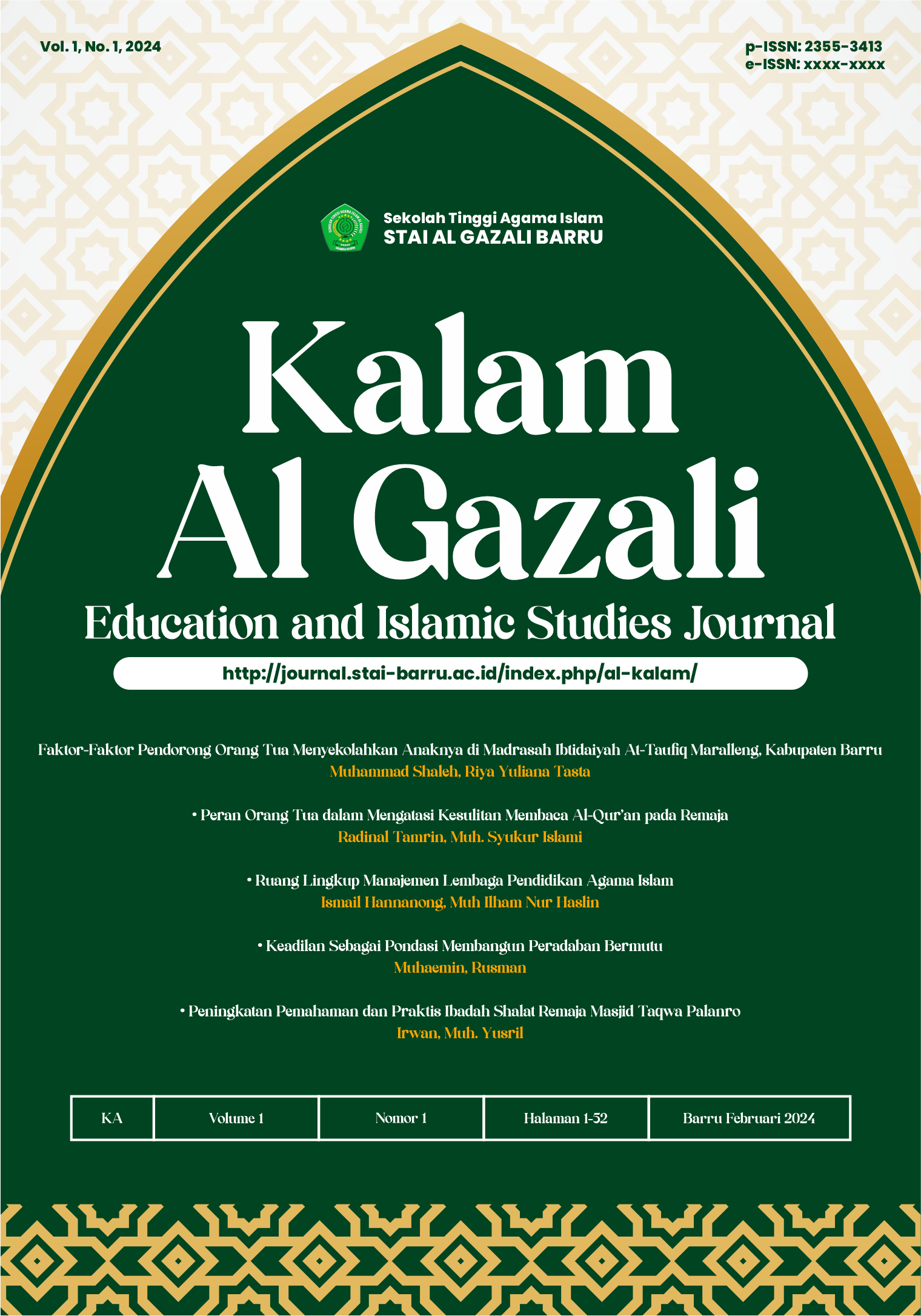The Transformation of the Meaning of Dalalah Qath'i and Zhanni in Fiqh Reasoning: A Comparative Analysis between the Classical and Modern Eras.
DOI:
https://doi.org/10.20241/rfzp8k70Keywords:
Dalalah Qath’, Dalalah Zhanni, Penalaran FiqhAbstract
The Qur'an and Sunnah as the basis of Islamic law include the concepts of qath'i (definite, not takwil) and zhanni (uncertain, can be takwil). Qath'i is limited, while zhanni allows ijtihad and interpretation. This research uses a philosophical-analytical approach with a descriptive-analytical analysis method, which focuses on literature in the form of verses of the Qur'an, Hadith, and the views of classical and contemporary scholars. Data were collected from various books of tafsir and ushul fiqh, then analyzed contextually and normatively to discuss the concept of Qath'i - Zhanni and produce relevant conclusions. The results of this study show that the importance of contextual understanding of the concepts of qath'i and zhanni in the interpretation of Islamic law is in accordance with the development of the times. The concept of qath'i establishes the basic principles of Islamic teachings that are fixed, while zhanni provides room for interpretation that can be adapted to evolving social and political conditions. The transformation approach from the more rigid classical period to the more flexible modern approach reflects the need to maintain the relevance of Islamic teachings to universal principles, such as human rights and social justice.
Downloads
References
Abd. Rauf Amin. (2009). Mendiskusikan Pendekatan Marginal dalam Kajian Hukum Islam. Yogyakarta: Cakrawala Publshing.
Abdul Wahhab Khallaf. (1968). Ilmu Ushul al-Fiqh. Kuwait: Dar al-Kuwaitiyyah.
Abi Husain Ahmad bin Faris bin Zakariya. (1994). Ma’jum Maqasyid fi al-Lughah. Beirut: Dar Al-Fikr.
Aftonur Rosyad. (2015). Qawaid Tafsir: Telaah Atas Penafsiran Al-Qur’an Menggunakan Qaul Sahabat. Ulul Albab, 16(2), 249 – 264. Retrieved from http://ejournal.uinmalang.ac.id/index.php/ululalbab
Barbara Stowasser. (1995). The Qur’an and Its Meaning. The Arab Studies Journal, 3(1), 4–8. Retrieved from https://www.jstor.org/stable/27933656
D.I. Ansusa Putra, M. H. (2020). The roles of technology in al-Quran exegesis in Indonesia. Technology in Society, 63, 101418. https://doi.org/https://doi.org/10.1016/j.techsoc.2020.101418
Djidin, M., & Syamsuddin, S. (2019). Indonesian Interpretation Of The Qur’an On Khilāfah : The Case of Quraish Shihab and Yudian Wahyudi on Qur’an 2: 30-38. Al-Jami’ah, 57(1), 143–166. https://doi.org/10.14421/ajis.2019.57143-166
Firdaus. (2013). KOnsep Qath’i Dan Zhanni Al-Dalalah dan Pengaruhnya Terhadap Penafsiran Al-Qur’an. Jurnal Hukum Diktum, 11(1), 24–31.
Hakim, L., Asrizal, A., Nur, A., & Agustiar, A. (2018). Qur’Anic Interpretation Method and Its Impact on Contemporary Interpretation. Jurnal Ushuluddin, 26(2), 142. https://doi.org/10.24014/jush.v26i2.4577
Haleem, M. A. S. A. (2018). The Role of Context in Interpreting and Translating the Qur’an. Journal of Qur’anic Studies, 20(1), 47–66. https://doi.org/https://doi.org/10.3366/jqs.2018.0320
Iqbal Abdul Rauf Saimima. (1998). Polemik Reaktualisasi Ajaran Islam. In Memahami Ajaran Suci dengan Pendekatan Transformasi (p. 182). Jakarta: Pustaka Panjimas.
Jaye Ellis. (2011). General Principles and Comparative. European Journal of International Law, 22(4), 949–971. https://doi.org/https://doi.org/10.1093/ejil/chr072
Kementerian Agama RI. (2019). Al-Qur′an dan Terjemahanya. In Departemen Agama RI. Jakarta: Widya Cahaya.
Khoiron Nahdliyyin. (2001). Tekstualitas Al-Qur’an: Kritik Terhadap Ulumul Qur’an. Yogyakarta: LKIS.
Kholidah, K. (2016). Qathi’ Dan Zhanni Menurut Masdar Farid Mas’Udi. FITRAH: Jurnal Kajian Ilmu-Ilmu Keislaman, 2(1), 19–36. https://doi.org/10.24952/fitrah.v2i1.453
Kurniasari, D., Roihani, N. R., & Nurjannah, S. M. (2021). Qath’i dan Zhanni dalam Kewarisan Islam. Media Syari’ah : Wahana Kajian Hukum Islam Dan Pranata Sosial, 22(2), 194. https://doi.org/10.22373/jms.v22i2.7851
M. Quraish Shihab. (1997). Membumikan Ak-Qur’an: Fungsi dan Pesan Wahyu dalam Kehidupan Masyarakat. Bandung: Mizan.
Mufid, M. (2014). Qat’i dan ZAnni dalam Pemikiran Islam (Memahami Teks dan Konteks secara Proporsional). Al-Hikmah Journal for Religious Studies, 15(2), 220–233.
Muhamad Fahmi Fakhrezi, Moch. Arif Bijaksana, A. F. H. (2021). Implementation of Automatic Text Summarization with TextRank Method in the Development of Al-Qur’an Vocabulary Encyclopedia. Procedia Computer Science, 179, 391–398. https://doi.org/https://doi.org/10.1016/j.procs.2021.01.021
Muhammad Wahyuni Nafis. (1995). Kontekstualisasi Ajaran Islam: 70 Tahun Prof. Dr. H. Munawir Syadzali. In Reaktualisasi dan Kritik (p. 328). Jakarta: IPHI dan Paramadina.
Nasrun Haroen. (1997). Ushul Fiqh I. Jakarta: Logos Wacana Ilmu.
Nawas, S. S. A. (2018). Problematika Teknik Interpretasi Dalam Penafsiran: Mengupas Konsep Qath’I-Dzanny. Tafsere, 6, 1–16. Retrieved from https://journal3.uinalauddin.ac.id/index.php/tafsere/article/view/7207%0Ahttps://journal3.uinalauddin.ac.id/index.php/tafsere/article/download/7207/5922
Quraish Shihab. (2006). Tafsir al-Misbah. Jakarta: Lentera Hati.
Quraishi, A. (2002). An Introduction to Structural Interpretation of the Qur’an. Muhammad Khamehgar, 8(29–30), 208–271. Retrieved from https://jqr.isca.ac.ir/article_22290.html
Rippin, A. (2016). The Qur’an and Its Interpretative Tradition. New York: Routledge.
Rosyada, Y. A. (2018). Dalalah Lafdzi (Upaya Menemukan Hukum). Al-Ahkam Jurnal Ilmu Syari’ah Dan Hukum, 2(2), 123–136. https://doi.org/10.22515/alahkam.v2i2.1066
Subhan, S. (2013). Klasifikasi Ayat-Ayat Hukum (Dari Segi Qath’i Dan Zhanni). Jurnal Pemikiran Hukum Islam, 12(2), 118–123.
Tahereh Mohseni. (2014). The comparative study of Qur’an interpretation & classic hermeneutics. International Journal of Business and Social Science, 5(9), 1–4.
Taufiq Adnan Amal. (1994). Tafsir kontekstual Al-Qur’an. Bandung: Mizan.
Zain-ul-Abdin Arijo, N. A. M. (2023). Urdu-Introduction And Features Of Tafsir Bayan Al-Qur’an By Dr. Israr Ahmed. The Scholar Islamic Academic Research Journal, 9(1), 118–140. https://doi.org/https://doi.org/10.29370/siarj/issue16urduarb6License









